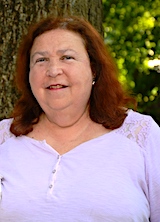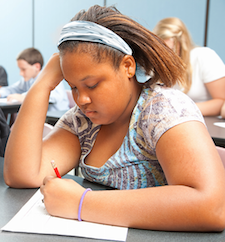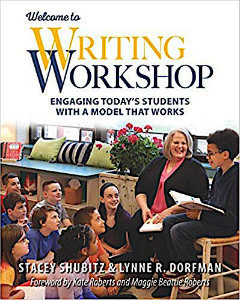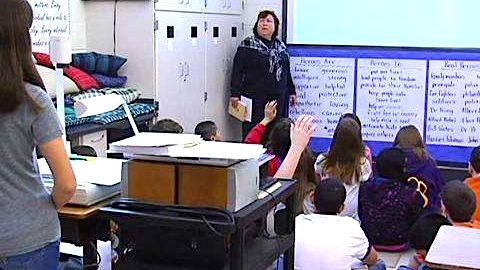Blending SEL Practices into Writing Communities
 Lynne Dorfman is co-author (with Stacey Shubitz) of Welcome to Writing Workshop (K-6). When we asked them to share some of their ideas, they both volunteered to do a post for us. Lynne first!
Lynne Dorfman is co-author (with Stacey Shubitz) of Welcome to Writing Workshop (K-6). When we asked them to share some of their ideas, they both volunteered to do a post for us. Lynne first!
By Lynne R. Dorfman
There are several ways we can support a positive, nurturing environment in writing workshop. First and foremost, a caring, supportive, and challenging classroom is most conducive to effective social-emotional teaching and learning.
The social-emotional aspects of a thriving writing community can be developed and maintained by looking at these key factors:
- Creating safety in our workshop
- Establishing a writing identity for each of our students
- Celebrating with students throughout the writing process
- Sharing our writing
- Sharing writing processes, anxieties, problems, and solutions
- Noticing and adapting others’ ways of writing
A sense of safety as part of the writing community
It’s important that students feel safe in our community. In class we can talk about what makes it safe or unsafe for students to ask questions, to share their writing, and even to show their confusion. As a community, we can create classroom norms for “writerly” discussions and peer conferences that invite all students to engage in classroom learning.
After the students have had three or four weeks to experience writing workshop, gather them as a community to establish the discussion guidelines and classroom norms that will be used for all interactions. A possible anchor chart for writerly discussions in whole- and small- group might look like this:
Discussion Guidelines Chart
- Stick to the topic.
- Pay attention to the person talking.
- Ask questions about ideas given.
- Give everyone a chance to participate.
- Try not to interrupt others.
- Critique ideas but not the person.
If students have ownership in this process, they will be more likely to respect the guidelines and abide by them. It’s best to post them on an anchor chart where they are visible for all to see. These charts will serve as friendly reminders to students. A T-chart or an M-chart works well for many aspects of workshop – for example, what peer conferences look like, sound like, and feel like.
This safety sense is fundamental to the activity of investigating writing. Students must be able to depend on critiques that move their writing forward but do not criticize the writer on a personal level. To help students become more joyful and engaged writers, we need to hear from the students themselves about what is going on in their minds as they plan, draft, and revise. They must feel comfortable expressing points of confusion or even disengagement with their writing.
Helping students see themselves as writers
In order to establish a writer’s identity for each of our students, we call them “writers” as often as possible. When you gather students for a mini-lesson, begin by saying something like, “Writers, today we are going to explore how authors create satisfying endings for their stories.”

Give students the freedom to abandon a piece of writing, too, and start something else. Help them understand when and why to abandon a piece (Welcome to Writing Workshop, 94). Always treat them as writers and give them the same options that professional writers can exercise.
Through a confidential survey (Welcome to Writing Workshop, 50), you can give students the chance to list four classmates they think they could work with in a partnership and two peers they do not believe they could work with well (students should provide the reason why they feel they could not partner with these classmates). This questionnaire is yet another way our students can feel they have some ownership in the writing community.
Celebrate!
Sharing writing and celebrating successes will be important to sustain a thriving community. When we recognize small accomplishments throughout the writing process instead of waiting until students have created the finished product, we substantially increase the number of positive interactions we have with students.
This practice helps us establish and maintain the trust we need when we ask students to do the revision and editing work that will move them forward as writers.
There are many events we can celebrate throughout the writing process:
- Completing a strong flash draft
- Writing a draft where the writer took risks
- Thoughtful and/or substantial revision
- Careful editing
- Trying a craft move with a mentor text
- Trying out a new genre, strategy, or organizational format

Students gain confidence and self-esteem through teacher-student(s) conferences, peer conferences, and learning how to self-assess their own writing. Immediate and ongoing feedback is important to support our developing writers and help them take risks to grow their skills set and become comfortable with many genres and formats.
Build a sound social-emotional environment by encouraging students to share their writing processes, the problems they encounter, and how they use their strategies and skills to find solutions. Ask student writers to:
- talk about what is confusing in the work they are trying to do.
- share how they, their teacher, and their peers deal with problems as they come up in the writing process.
- participate in small- and whole- group writerly discussions to make sense of new genres, formats, and strategies.
Supporting a growth mindset
Strive for a growth mindset for all members of the writing community. Encourage student writers to take risks, to revise, and to edit their writing. Help them understand there is no one way to approach a topic and write about it.
Use anchor charts to make the community thinking visible and permanent. Finally, discuss the relationship between literacy and power in our country. Investigate and talk about people who write in our society, what they write, why they write, and how writing affects their lives and the lives of others.
As we return to our classrooms at summer’s end, let’s think about how successful teachers go beyond the basics to help their students become productive members of contemporary society. In Literacy Essentials, Regie Routman (2018, 52) urges educators to “be sure the setting, tone, and classroom culture encourage and enhance risk-taking, deep conversations, and meaningful learning.” We so agree.
Social and emotional education enables us to prepare students for the challenges that await them. The social-emotional environment we create in our writing workshop and across the day will help our students become knowledgeable, responsible, and caring human beings who know how to listen and let other people’s thinking in.
___________________________________________

Lynne is co-author of Grammar Matters: Lessons, Tips, and Conversations Using Mentor Texts, K-6; Mentor Texts: Teaching Writing Through Children’s Literature, K-6 (2017 2nd ed) and many other books for ELA educators. Her newest book, Welcome to Writing Workshop: Engaging Today’s Students With a Model That Works, is written with Stacey Shubitz.
Lynne has a reading specialist certificate from LaSalle University and a doctoral degree in educational leadership from Immaculata University. She serves as a literacy consultant for grades K-8 and enjoys coming to classrooms to model writing lessons, co-teach, and/or coach. Visit her blog and follow her on Twitter.





































